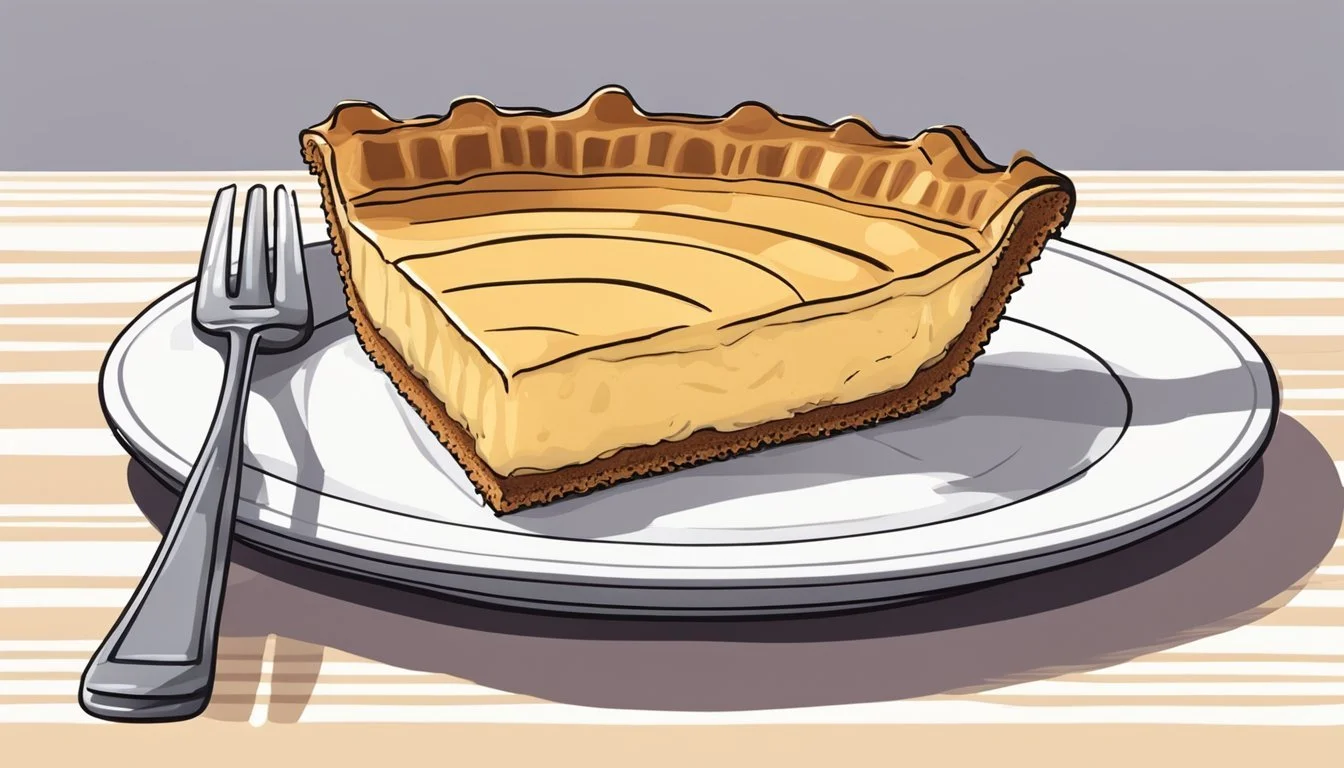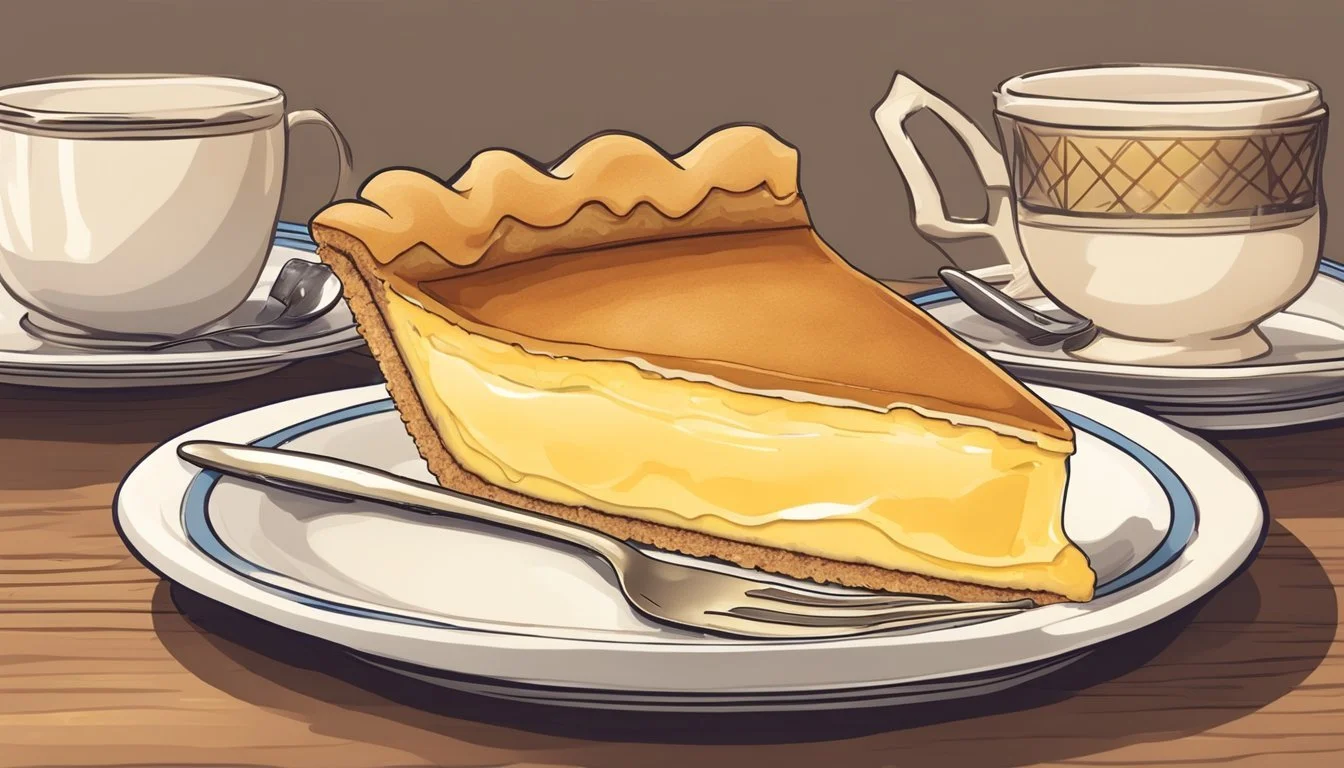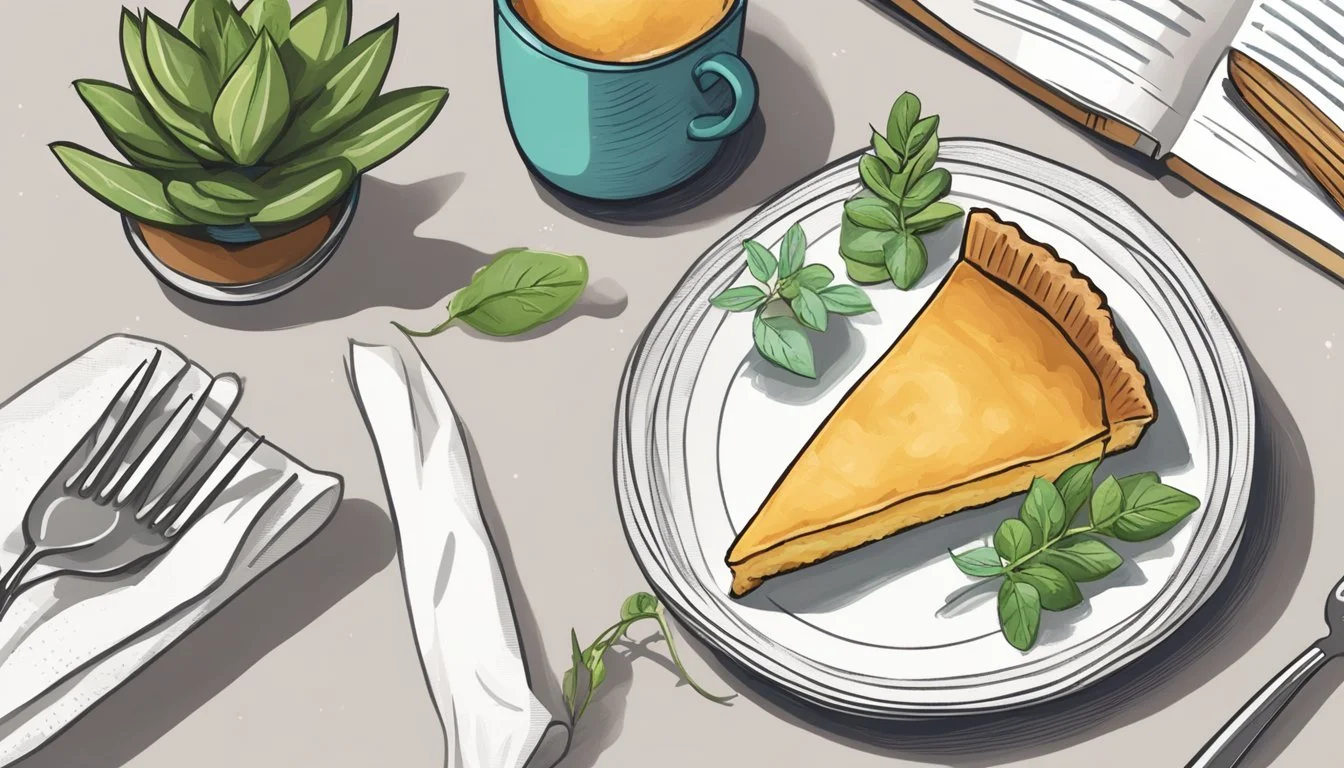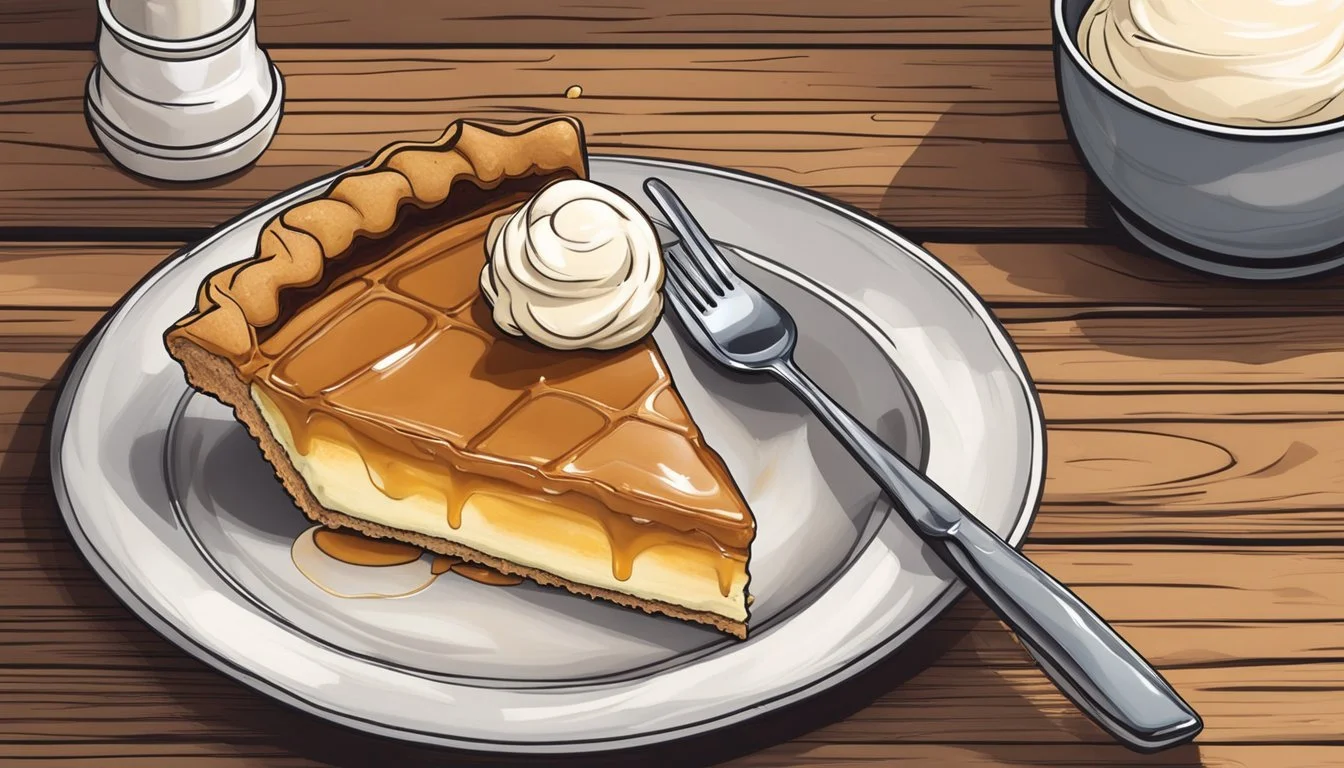Is Chess Pie Vegan?
Unveiling the Traditional Dessert's Ingredients
Chess pie, a classic Southern dessert known for its sweet, rich filling, traditionally includes ingredients such as sugar, butter, eggs, and occasionally a small amount of cornmeal or flour to thicken the mixture. Given that the standard recipe relies heavily on animal products like butter and eggs, classic chess pie is not vegan.
However, the versatility of this dessert allows for a variety of adaptations, and many vegan versions of chess pie now exist. These recipes substitute animal ingredients with plant-based alternatives such as vegan butter, non-dairy milk, and egg replacements derived from natural products like cornstarch, almond milk, and even tofu to mimic the pie’s signature texture. With these substitutions, chess pie can be made to suit a vegan diet without compromising the beloved flavor profile of the original.
What Is Chess Pie?
Chess pie is a classic Southern dessert known for its simple, sweet filling encased in a pastry shell. This rich, custardy pie typically appears on tables during festive occasions like Thanksgiving.
Origins and History
The origins of chess pie are somewhat elusive, but it is believed to have been around for centuries. One theory suggests the name derives from a corruption of "cheese pie," despite the absence of cheese in the recipe. It's also posited that the name could come from a Southern dialect interpretation where "just pie" transformed phonetically into "chess pie."
Classic Chess Pie Composition
A classic chess pie consists primarily of sugar, eggs, and butter, with cornmeal acting as a thickening agent. These ingredients form the foundation of the pie’s rich filling. A dash of vinegar or citrus juice is often added for a slight tang, balancing the sweetness.
Sugar: Sweetness and structure
Eggs: Binding and custard-like texture
Butter: Richness and flavor
Cornmeal: Thickness and texture
Traditionally, chess pie does not include fruits, nuts, or chocolate, which sets it apart from other pies. It's characterized by its creamy, dense texture and a crust that's crisp and golden.
Understanding Veganism
Veganism is a lifestyle choice that excludes the consumption and use of animal products. Those following a vegan diet eat plant-based foods and avoid all animal-derived ingredients.
Vegan Diet Fundamentals
A vegan diet includes fruits, vegetables, legumes, grains, nuts, and seeds. It is entirely dairy-free and egg-free, focusing on whole foods derived from plants. Below is a basic outline of what constitutes a vegan diet:
Fruits and Vegetables: The cornerstone of any vegan diet, providing essential vitamins and minerals.
Legumes: Include beans, lentils, and chickpeas, which are important protein sources.
Grains: Such as rice, quinoa, and barley offer carbohydrates and fiber.
Nuts and Seeds: High in healthy fats and protein; almonds, flaxseeds, and walnuts are common choices.
Plant-based Milks: Almond milk, soy milk, coconut milk, and other non-dairy milks are common replacements for cow's milk.
Vegan Substitutes for Baking
Replacing dairy and eggs in baking can be achieved with a variety of substitutions. For instance, vegan butter or coconut oil can be used in place of traditional butter. Egg replacements include:
Common Egg Substitutes Uses in Baking Flaxseeds or Chia seeds Binding and adding moisture, often in cakes or muffins. Applesauce or Mashed banana For sweetness and binding in quick breads and brownies. Commercial Egg Replacers Made to mimic eggs’ consistency and binding properties.
Vegan whipped cream can be made from coconut cream, and there are multiple brands offering dairy-free vanilla ice cream for dessert accompaniments.
Veganizing Chess Pie
Veganizing a chess pie involves careful substitution of non-vegan elements without compromising on the classic taste and texture. It's crucial to pay attention to both the crust and filling to ensure each component aligns with vegan dietary preferences.
Crust Alternatives
A vegan pie crust is essential in creating a vegan chocolate chess pie. Traditional pie shells often use butter, but there are vegan-friendly alternatives to this. Vegan pie crust solutions include using plant-based butters or non-hydrogenated shortening, such as Crisco. Here's a quick recipe card for a vegan pie crust:
Ingredients:
1 1/4 cups all-purpose flour
1/4 teaspoon salt
1/2 cup Crisco (or any plant-based shortening)
4–8 tablespoons ice water
Instructions:
In a bowl, combine flour and salt.
Cut in the Crisco until the mixture resembles coarse crumbs.
Gradually add ice water, 1 tablespoon at a time, until dough forms.
Roll out to fit a pie dish, then fill as desired and bake according to your recipe.
Filling Modifications
The filling of a vegan chocolate chess pie needs to omit all dairy and eggs. In their place, one can use combinations of non-dairy milk, such as almond or soy milk, and cornstarch as a thickener. For the chocolate element, ensure the cocoa powder or chocolate used is dairy-free. Frequently, a blend of sugar, cocoa powder, vegan butter, cornstarch, and non-dairy milk is mixed to create the smooth, rich filling that characterizes a chess pie.
Vegan Sweeteners
When selecting sweeteners for a vegan chocolate chess pie, one must opt for vegan-certified sugar. Some sugars are processed with bone char, making them unsuitable for vegans. Alternative sweeteners include coconut sugar, agave nectar, or maple syrup—although these may alter the final flavor profile slightly. It is important to use granulated sugar or a granulated sugar substitute to maintain the proper texture in the pie.
By carefully choosing ingredients and making the necessary substitutions, one can craft a delightful vegan version of the classic chess pie, ensuring that the end result is as satisfying as its traditional counterpart.
Vegan Chess Pie Recipe
Crafting a vegan chess pie is a delectable journey into the world of plant-based desserts where simple substitution ensures a cruelty-free version of this Southern classic. This recipe ensures a smooth custard-like filling, encased in a flaky crust, imbued with the richness of cocoa and the aromatic presence of vanilla.
Ingredient List
Pie Crust
1 1/2 cups all-purpose flour
1/4 tsp salt
1/2 cup dairy-free butter, chilled and cubed
3-4 tbsp cold water
Filling
1 1/2 cups granulated sugar
3 tbsp cocoa powder
5 tbsp melted unsalted vegan butter
A pinch of salt
3 tbsp cornstarch
1/2 cup almond milk
1 tsp Pure Vanilla Extract
Optional: 1 tsp espresso powder
6 tbsp aquafaba (chickpea brine)
For Serving
Powdered sugar (optional)
Vegan whipped cream (optional)
Step-by-Step Instructions
Start by preheating the oven to 350°F (175°C).
Prepare the pie crust: In a mixing bowl, combine flour and salt. Cut in the chilled butter using a pastry cutter or your fingers until the mixture resembles coarse crumbs. Gradually add cold water, one tablespoon at a time, stirring with a fork until dough forms. Wrap dough in plastic wrap and chill in the refrigerator for at least 30 minutes.
Roll out the crust on a floured surface and transfer to a 9-inch pie dish. Trim any excess and crimp edges as desired.
Use a fork to poke holes into the bottom of the crust, line with parchment paper, add pie weights, and bake for 15 minutes.
Make the filling: Whisk the granulated sugar, cocoa powder, melted butter, salt, cornstarch, almond milk, and vanilla extract in a large bowl until combined and smooth. Stir in the aquafaba.
Pour the filling into the pre-baked crust.
Bake for 45-50 minutes. The pie should jiggle slightly but set when it is ready.
Baking and Cooling
Once baked, remove the pie from the oven and place it on a cooling rack.
Allow the pie to cool completely at room temperature. The filling will continue to set as it cools.
For the best texture, chill in the refrigerator for a few hours before serving.
Serve with a dusting of powdered sugar and a dollop of vegan whipped cream if desired.
Each slice offers the perfect balance between a tender crust and rich chocolatey custard, demonstrating that traditional recipes can be reinvented in vegan form while retaining their classic comfort food appeal. This easy recipe yields a dessert that's sure to be a crowd-pleaser, whether served fresh or out of the freeze for later indulgence.
Tips for Perfect Vegan Chess Pie
Creating a perfect vegan chess pie involves careful attention to achieve that smooth, custardy texture that's characteristic of a traditional chess pie, while ensuring all ingredients align with vegan dietary choices.
Achieving the Right Consistency
The key to the perfect custard texture lies in the balance of wet and dry ingredients. For a smooth and firm filling, one must ensure the right ratio of thickening agents, such as cornstarch or arrowroot powder, to liquid components. It's essential to thoroughly whisk the vegan milk alternative with the cocoa powder and melted vegan butter to prevent lumps. Baking the pie until it's just set, but still has a slight jiggle in the center, will prevent overbaking, which can lead to a tough texture.
Consistency Tips:
Whisk until smooth to avoid lumps.
Bake until the filling has a slight jiggle for a soft custard.
Decor and Presentation
Caring for the presentation can turn a simple pie into a gourmet vegan dessert. Once the pie is cool, adding a dusting of powdered sugar or a dollop of vegan whipped cream can enhance its charm exponentially. For those who prefer a less sweet, more intense chocolaty flavor, a garnish of dark chocolate shavings could be a sublime addition. Slices of vegan chess pie can be served with a scoop of vegan vanilla ice cream to cut through the richness and please the palate.
Presentation Ideas:
Garnish: Sprinkle powdered sugar or add vegan whipped cream on top.
Serve with: Pair with vegan vanilla ice cream for a complementary treat.
Storage and Preservation
When it comes to chess pie, proper storage techniques are essential for maintaining freshness and flavor. Whether you're keeping it cool in the fridge or storing it for the long term in the freezer, understanding the right methods can make all the difference.
Refrigerating Your Pie
Chess pies, known for their rich custard filling, should be promptly refrigerated if not consumed immediately. To refrigerate, one should first allow the pie to cool to room temperature to prevent condensation, which can make the crust soggy. Once cooled, it can be loosely covered with plastic wrap or aluminum foil and placed in the fridge. A 9-inch pie can often remain fresh for up to 4 days when refrigerated.
Slicing the pie while it's cold ensures clean cuts, but for optimal taste, let individual slices come to room temperature before serving, unless the recipe specifies otherwise.
Freezing and Reheating
For longer storage, freezing a chess pie is a viable option. After baking, allow the pie to cool completely. Then, wrap the entire 9-inch pie pan tightly in plastic wrap, followed by a layer of aluminum foil to prevent freezer burn. The pie can be stored in the freezer for up to two months.
When ready to reheat, one should thaw the pie in the fridge for several hours or overnight to maintain the consistency of the custard. To reheat, remove all wrappings and place the pie in a preheated oven at a low temperature, typically around 275°F, just until warmed through. Be vigilant to avoid overheating, as this may compromise the texture of the custard filling.
Nutritional Considerations
When considering a vegan version of chess pie, one must examine both the calorie and nutrient content as well as potential allergens. Vegan chess pies substitute plant-based ingredients for traditional dairy components which can affect nutritional values.
Calorie and Nutrient Content
Vegan chocolate chess pie typically uses substitutes like vegan butter and non-dairy milk to replace butter and milk found in traditional recipes. Here is an approximate breakdown of the nutrients in a standard slice of vegan chocolate chess pie:
Calories: 400-500
Fat: 20-30g (with a variance based on the type of vegan butter or oil used)
Carbohydrates: 50-60g
Sugars: 30-40g
Fiber: 1-3g
Protein: 3-5g
These pies are often dairy-free and may include almond milk or soy milk, which can contribute to the protein content. Nutritional content can also vary depending on the inclusion of nuts, gluten-free flour, and the type of sugar used.
Allergen Information
The vegan chocolate chess pie is typically free from dairy, which is beneficial for lactose-intolerant individuals. Common allergens to consider in vegan versions may include:
Soy: Sometimes used in vegan butter or chocolate.
Gluten: Found in many traditional pie crusts unless a gluten-free alternative is used.
Nuts: Almond milk or other nut-based ingredients may be present.
For those with specific dietary needs, it’s important to check recipes for these ingredients or seek out alternatives that omit possible allergens.
Additional Vegan Dessert Ideas
When exploring vegan dessert options, there's a whole array of pies, tarts, cakes, and sweets that cater to plant-based diets without compromising on flavor. From classic treats to innovative creations, these desserts showcase simple and easy approaches to vegan baking.
Pies and Tarts
Vegan Pecan Pie: For a rich and classic experience, a vegan pecan pie uses alternative sweeteners and binds with a silken tofu base for that fudgy filling.
Vegan Pumpkin Pie: A staple at any holiday table, this pie features roasted pumpkin puree, aromatic spices, and is typically topped with a dollop of vegan whipped cream.
Chocolate Chess Pie: A simple, yet profoundly flavorful dessert, chocolate chess pies are made indulgent and creamy with dairy-free chocolate and a flaky vegan crust.
Cakes and Other Sweets
Vegan Chocolate Pie: With the right dairy-free chocolate and a blend of plant-based milks, one can create an easy and exquisite vegan chocolate pie that's both rich and satisfying.
Fudgy Brownies: These treats remain a beloved classic and can be made vegan with substitutions like flaxseed meal or vegan butter to keep that dense, fudgy texture.
Roasted Fruit Compotes: A lighter option that can be paired with vegan cakes or served over vegan ice cream, roasted fruits offer a natural and refreshing sweetness.
These desserts are designed to please any palate and fit seamlessly into any vegan diet, providing delightful endings to any meal.







